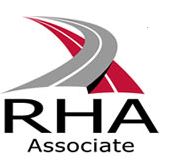
Commercial Transport Law Specialist



01302 775 522
Calls answered 24/7
Nationwide Coverage

NA Commercial Solicitors
Consult Us By Email

Principal Solicitor : Simon Newman
NA Commercial Solicitors
Regulated by the Solicitors Regulation Authority Reg No 441100
Principal : Simon Newman
Free Tel Consultation

Call
Latest Articles

FIVE TIPS FOR TIGHTENING UP
YOUR TACHOGRAPH PROCEDURES
One - Tachograph Inserted From the Moment A Driver Takes Over a Vehicle
A tachograph or drivers card should be inserted from the moment a driver takes over a vehicle.
In practice this means that the tachograph should be inserted before a driver begins his daily inspection. As evidence of good practice, a tachograph should all always therefore record a short period of other work, say 10 to 15 min minimum, during which the driver should be doing his daily inspection.
If this period is not recorded on the tachograph as other work, then this leads to one of two possibilities. Either the driver failed to record the time taken to do his daily inspection, in which case the driver has committed a criminal offence under the tachograph regulations. The second possibility is that the driver has failed to do his daily inspection at all and is therefore guilty of another breach of his legal obligations.
Two – Correct Use of Mode Switch
This is one of the most common breaches of the tachograph regulations so far as analogue tachographs are concerned. For some reason, drivers regularly fail to correctly use the mode switch. It is the most basic of things connected with the use of a tachograph. Drivers must always correctly and accurately record driving, other work, rest and brakes.
By failing to correctly use the mode switch, a driver is unable to prove the activities he has been doing and is therefore unable to show whether he has complied with the drivers hours regulations. Quite separately from that, a criminal offences committed by the driver failing to make an accurate record of his daily duties. Both the driver and you, the operator, could find yourself on the wrong end of a magistrates court summons as a result of the driver failing to do something which should be second nature.
Three – Record Manually When Away from the Vehicle
Failing to record manually is something which is easily done. A tachograph record must be a complete record of a driver's activities on any given day.
Where a driver has done work away from his vehicle, this should be handwritten on the back of an analogue tachograph. The driver should also be aware that work done before arriving to take over vehicle must also be recorded manually.
I recently represented a driver in court who had been driven by a colleague to relieve a driver who had reached the extent of his driving hours and was only about 40 miles away from base. The driver had to plead guilty to a criminal offence because the time during which he was being driven out to relieve the other driver should have been recorded manually as the work.
Four – Analogue Tachograph Records, Keep Track of Them
Especially the case with operators who use a high proportion of agency staff or casual drivers, it can sometimes be difficult to keep track of tachograph charts. I regularly represent operators who are in trouble with the authorities because they are unable to produce all the tachographs of their drivers because agency or casual drivers have failed to return their records.
A simple way to help you keep track of tachograph records is to give each blank record issued to drivers a unique number. You should keep a log of which driver has been allocated with which tachograph sheet and ensure that particular driver gives back that particular record sheet.
Some tachograph chart providers supply them with unique serial numbers already printed on. Of course, you will still face the problem of having to track down drivers who are no longer driving for you but it does make the task easier because you know exactly which tachograph records you need from which drivers.
Five – Photocopy Records Retained by Drivers
Keeping track of tachographs is made very difficult by the 28 day rule under which drivers must keep 28 days worth of tachograph records with them in their vehicle at all times.
A simple but effective method is to photocopy drivers record sheets which they are keeping with them on a daily or weekly basis. This allows you to first of all know exactly which record sheets you will be expecting the driver to hand in after the end of the 28 day period. You will also be able to do checks on drivers hours compliance before the charts are handed in and if any record sheets do go astray the least you have a copy of them.
Tachographs and drivers hours infringements are the most common reason for criminal prosecutions against commercial drivers and operators. In nearly all cases these infringements are easily avoidable.
An Article Produced in August 2011
For more infromation on this or any other legal matter call us on 01302 882 555